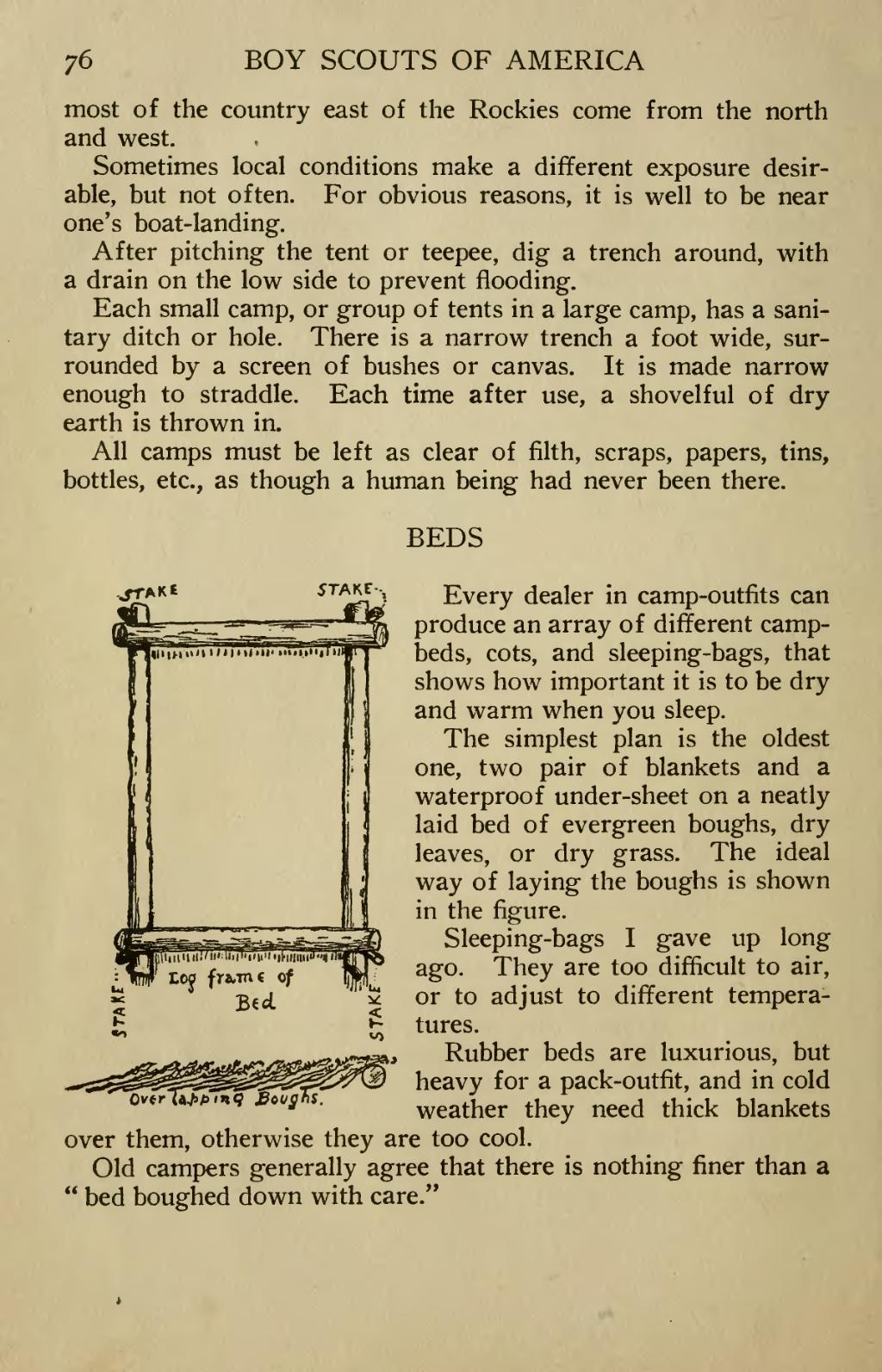Pokračování textu ze strany 91
most of the country east of the Rockies come from the north and west.
Sometimes local conditions make a different exposure desirable, but not often. For obvious reasons, it is well to be near one's boat-landing.
After pitching the tent or teepee, dig a trench around, with a drain on the low side to prevent flooding.
Each small camp, or group of tents in a large camp, has a sanitary ditch or hole. There is a narrow trench a foot wide, surrounded by a screen of bushes or canvas. It is made narrow enough to straddle. Each time after use, a shovelful of dry earth is thrown in.
All camps must be left as clear of filth, scraps, papers, tins, bottles, etc., as though a human being had never been there.
BEDS
Every dealer in camp-outfits can produce an array of different camp-beds, cots, and sleeping-bags, that shows how important it is to be dry and warm when you sleep.
The simplest plan is the oldest one, two pair of blankets and a waterproof under-sheet on a neatly laid bed of evergreen boughs, dry leaves, or dry grass. The ideal way of laying the boughs is shown in the figure.
Sleeping-bags I gave up long ago. They are too difficult to air, or to adjust to different temperatures.
Rubber beds are luxurious, but heavy for a pack-outfit, and in cold weather they need thick blankets over them, otherwise they are too cool.
Old campers generally agree that there is nothing finer than a "bed boughed down with care".
